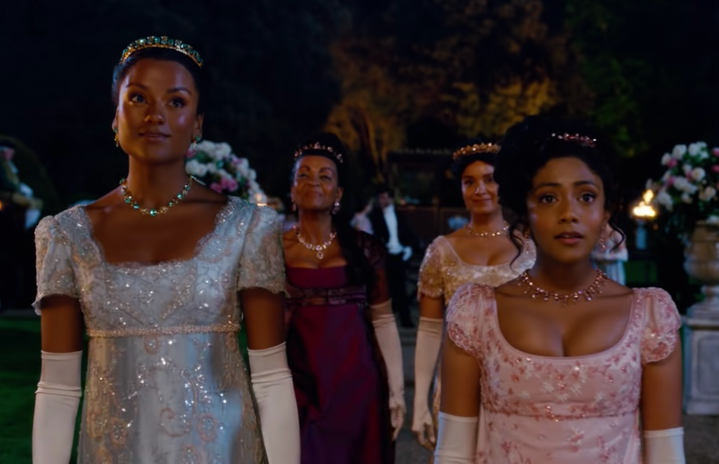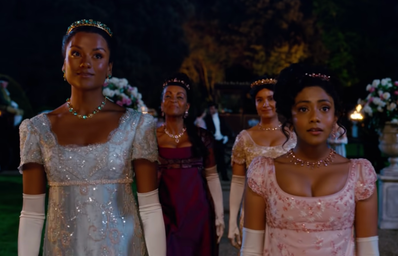Amongst the record-breaking viewership for the highly-anticipated second season of Bridgerton, were my roommates and I, encapsulated by the Regency world-building and the classic enemies-to-lovers trope. Seemingly after we binged the season (in a short few days may I add), the media already had a myriad of articles posted discussing how this season differs from the first, the successes and failures, and more importantly, the discussion of representation.
Season 2 of Bridgerton focuses in on Phoebe Bridgerton’s brother, Viscount Anthony, and his quest for love. It also introduces another non-traditional casting choice with two Indian characters: Kate and Edwina Sharma – not to mention that these actresses have deeper complexions, rather than the typical inclusion of lighter-toned actors in titular roles.
As a viewer, I took much delight to see more representation in the show and development from the approach that the show writers used in the first season. Furthering the critical response to Season 1’s “color-blind” approach, I did not find much depth in the highly controversial scene of implicit sexual assault or Duke Simon’s character entirely. I found Season 2’s inclusion of Indian rituals, language, and clothing to be subtle enough to show the beauty of the culture without having to explicitly spell it out for the audience, a stark contrast from what we have been seeing in Season 1.
It is without question that there has been a serious lack of South Asian representation in the film and television industry. According to UCLA’s Hollywood Diversity Report for 2021, researchers found that there was a general increase in hiring diverse actors. However, Asian Americans, LatinX, and indigenous groups remain underrepresented in all acting categories. In fact, in 2020-2021, South Asians only had a 1.5% screen presence across all broadcast and digital television.
Charithra Chandran, who plays Edwina Sharma, told the Hollywood Reporter that “[y]ou seldom see dark-skinned Indian women as the romantic interest and the lead that Simone plays or the diamond that I play […] I hope that it makes girls who look like us feel more comfortable in their skin — feel like they belong”.
Many critics, however, found that the show’s “color-consciousness” was not at all fruitful but instead a “kind of plausible deniability disguised as meaningful diversity”. While I do agree that there were many opportunities for the show to address the history of Britain and India’s relationship as it pertains to colonialism, I also find that this discussion may not have been necessary for a show like Bridgerton — one that is fully consumed in its romantic escapism. For me, the storyline of an Asian perspective on the responsibility of being an older sister, the Haidi ceremony and head massage, or even the inclusion of the song “Kabhi Khushi Kabhie Gham” during the wedding episode, were more important inclusions to celebrate culture.
While I am not South Asian, and as such cannot define what successful South Asian representation in media looks like, as an Asian American, I do appreciate the more subtle inclusion of culture rather than a blatant explanation for viewers that might come off as “performative”.
Currently, 53% of all Americans under the age of 18 are people of color, and as such, it is imperative that the media effectively represent the diversity of our country. While that standard may be different for each viewer, I do believe that Bridgerton’s second season does begin the visualization of what effective representation looks like.


